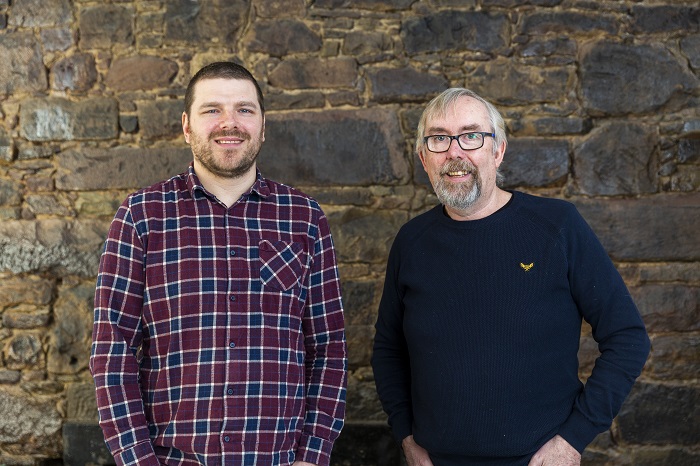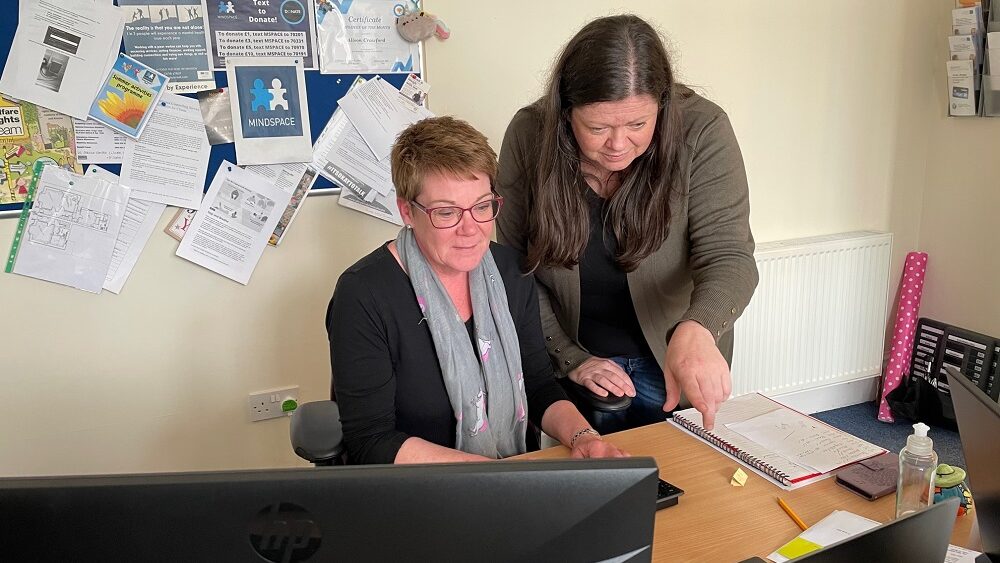SCVO Digital Call To Action 3
Introduction
This is our third Call to Action for a Digitally Confident Scottish voluntary sector. In this report, we reflect on the digital progress the Scottish Voluntary Sector has made since 2018. We highlight how pandemic pressures have catalysed huge digital changes in organisations large and small. And we chart a course ahead, highlighting what needs to happen to ensure that Scotland’s voluntary sector keeps progressing with digital.
In our previous call to action in 2018, we saw that digital change was already gathering a lot of momentum. Pioneering organisations had grasped the potential of digital and were starting to change rapidly. But many organisations were only evolving gradually, and a significant number of organisations still weren’t using digital tools or approaches at all. At SCVO, we spent a lot of time encouraging people to get started on their digital journey.
All of this changed in March 2020.
Organisations right across the voluntary sector rapidly turned to digital during the pandemic, because there was no other option to keep in touch with people, keep working, and provide services. Everyone learned a huge amount during this forced experiment. Now it’s time to reflect and work out what to keep doing over the longer term. This report is the result of reflecting on the hundreds of conversations we’ve held to support organisations on their digital journey throughout the pandemic.
Digital is now a key part of life for everyone. This means that providing good quality digital services and being able to adapt quickly is more important than ever. Although the pace of change has accelerated very rapidly, the principles and ideas driving digital change have stayed consistent.
In 2022, our call to action is that any voluntary sector organisation, of any size, should be able to deliver digital services to a high standard. As a sector, we need to take the best of digital strategy and practice from the pandemic, and make this achievable for any organisation in the voluntary sector.

Digital is now a key part of life for everyone. This means that providing good quality digital services and being able to adapt quickly is more important than ever.
A rapidly-changing context
Global pandemic
Clearly, the global pandemic represents a massive and still unfolding change since our last Call to Action in 2018. This has been affecting all aspects of life, but in particular:
- It has had massive and ongoing health and mental health impacts
- Pandemic response measures such as social distancing have created a myriad of challenges for the voluntary sector, both creating new needs and constraining the types of support on offer
- It has had a huge social and economic impact, which will continue for some time to come
- New services and modes of working have exposed gaps in digital skills and high demand for employees with digital skills at all levels
- Pandemic pressures have led to burnout in organisations right across the voluntary sector
More positively, the pandemic has led to:
- A massive break with the status quo, with organisations becoming much more confident about learning quickly and trying new things
- People in every community and stage of life experiencing digital services and platforms for the first time
- A massive experiment in home and remote working, leading to a radical challenge to traditional modes of working
Climate emergency
The need for urgent climate action and Net zero are shaping more and more decisions right across society. Introducing digital platforms and services offers significant opportunities to reduce transport-related carbon emissions. At the same time, tech and digital industries are getting to grips with specific issues such as greening the web and devices which quickly become obsolete.
Anti-racism, diversity and equality
The 2020 Black Lives Matter protests mobilised millions of people to expose and oppose structural racism. While initially focussed on police brutality, groups right across society have grappled with the deeper issues of racism, prejudice and inequality. Within the voluntary sector, groups such as #CharitySoWhite have highlighted that charities need to take urgent and sustained action to root out racism. In the digital sphere, a focus on anti-racism highlights the need for creating diverse teams, being open to lived experience from all communities, and taking steps to identify and avoid bias in the use of data.



What changed from March 2020
During the pandemic, organisations of every size underwent a rapid and almost universal switch to remote working, and massively improved their approach to digital services.
SCVO led on a number of key initiatives to help people and organisations adapt to this rapid shift to digital channels and ways of working:
- The Connecting Scotland programme, delivered by SCVO in partnership with the Scottish Government, has worked with thousands of partner organisations to give 60,000 households access to devices, connections and support to get online during the pandemic.
- During this time of change, over 2,500 organisations came to 50 DigiShift community calls to develop their knowledge and support each other.
- SCVO’s flagship Senior Leaders’ Programme and our topical digital training rapidly switched to online delivery, and reached many more organisations as a result.
- SCVO’s digital team provided 1-to-1 support to hundreds of organisations to help them tackle a wide range of digital challenges

Our ambition for Scotland’s voluntary sector:
Everyone gets digital
We’re calling on Scotland’s voluntary sector to:
Take the best of digital strategy and practice from the pandemic, and make this achievable for any organisation in the voluntary sector. Any voluntary sector organisation, of any size, should be able to deliver digital services to a high standard.
Achieving this vision requires 5 big ambitions:
- ‘It’s for everyone’ – Organisations need to start with user needs and take a service design approach to ensure their services are accessible and relevant for everyone
- Organisations right across the voluntary sector should become canny investors in digital and technology.
- Digital ways of working need to be embedded as a default, core capability rather than something additional that is deployed in exceptional circumstances.
- The voluntary sector workforce should become confident users of responsive, reliable technology.
- Digital platforms and ways of working need to be secure by design.
Using digital well will mean that the voluntary sector can deliver substantially more impact from the same resource, and digital services will ensure that the sector is more agile and responsive to changing needs.

Themes and key next steps
It’s for everyone
What’s the issue?
Digital services need to be built around users, the problems they face and their needs. Services which ignore these are not accessible and lack relevance. Making services that work for everyone means responding to diversity and avoiding a ‘one size fits all’ approach.
What does good look like?
Organisations of all sizes and sectors are able to access clear advice and support to improve their digital capability. Digital services are tailored to user needs and high-quality digital services are delivered on a routine basis – ‘it’s just what we do’.
How do we get there?
Individual organisations use service design, user research and accessibility best practice in all their services. Support organisations need to champion service design and accessibility best practice through guidance, training and support. Funders need to resource organisations to design services well and ensure they do not fund ‘solutions’ which are driven by product features rather than real needs.
Three things you can do now to make progress
- Write a user needs statement for one of your core services and discuss it with your team
- Apply some accessible content design principles to your digital channels (for example removing PDFs and replacing them with structured web pages)
- Doing some user research to understand user experience/user journey from a real perspective

Early on it was obvious that barriers to access were key obstacles for people experiencing homelessness. We aimed to address this by providing devices and connectivity to ensure people could get online. We also developed a digital skills learning framework called ‘Quick Wins’ with a focus on tools that can have a very immediate impact, eg WhatsApp. Our digital champions provided person-centred support to help people to get the most out of the devices. Our evidence shows that this combination of device, data, skills and support was very effective in helping people to get online and make positive changes in their lives. We’re now looking at improving the ways we design and deliver our services using online channels so we can offer support in a digital capacity. Digital channels offer so much in terms of availability and accessibility and we recognise there is tremendous potential in this space.
Jamie Trout, Simon Community
Be canny investors
What’s the issue?
Organisations don’t invest enough in digital, or they invest in the wrong things. Getting ahead with digital takes commitment and persistence – but pays off many times over.
What does good look like?
Organisations are investing strategically in digital, data and technology and continually growing their capability. They are testing early and ‘failing fast’, and using evidence of the user and business value delivered to unlock further investment. Funders are investing flexibly and appropriately. Technology vendors are shaping their product offering in response to demand from the voluntary sector.
How do we get there?
Organisations need to improve their knowledge of what common digital platforms can offer, so they are using the full potential of digital. Adopting a practice of working in the open and reusing successful service patterns and technology stacks will mean that the whole sector can learn and develop more quickly. Funders have an important role in providing core and flexible funding so that organisations can keep up, and not backing ‘innovation’ for its own sake
Three things you can do now to make progress
- Develop a medium-term investment roadmap, look at what peers are doing, have an open conversation with your technology providers
- Use prototypes or MVPs to discover what users need and test whether a certain approach will actually work. A prototype and the insights from real-world users can make a compelling case for investment, too.
- If you’re not already using donated/discounted cloud software from Microsoft or Google, you should be. And if you’re using it, check whether you are using it well – both platforms now have a host of features built-in that many orgs are paying for separately

We’ve spent time reflecting on and recognising gaps we need help with. Quite often there can be a digital solution to help with these. We now see digital as a valuable extra tool where it can make a difference. It’s important to know why it will make a difference. For example, developing an online store for our resources will remove a lot of our admin workflow and free up staff resource to focus on resource development and delivery. An online store also takes away a lot of the questions people used to have around getting resources from us.
Neil Mathers, Curiosity Collective
Digital capability is embedded and happening every day
What’s the issue?
Digital ways of working were tried during the pandemic but remain unfamiliar. We all developed quick fixes that did the job in a crisis but may not last over the long term. Organisations haven’t developed their capability enough to really embed digital and see the long-term benefits
What does good look like?
Digital tools, approaches and ways of working are embedded right across organisations throughout the sector, with every team able to use them appropriately to enhance their reach, efficiency and impact. Digital services are secure and accessible by design. Digital is not siloed but has become an integrated part of the way the organisation works.
How do we get there?
Organisations need to apply digital and service design thinking right across their organisations, rather than creating a narrow digital silo. Support organisations need to help the sector appreciate the potential of digital to help in all aspects of their work. Funders need to consider backing digital elements of core work rather than making organisations stretch to fit a standalone digital strand.
Three things you can do now to make progress
- Do a retrospective on changes you made during the pandemic, and start building a roadmap of changes you want to make over the short, medium and longer term
- Build cross-disciplinary teams that are working together on meeting user needs right through their journey with your organisation
- Rather than having a separate digital strategy, consider embedding your digital ambitions within each work area or priority for your organisation

Because our work traditionally is face to face, digital adoption always felt a bit ‘in the future’ - the pandemic made us get to grips with it. We were very mindful of the people we work with and our responsibility to them. For a lot of clients there was a hope that the restrictions around face to face work would be temporary. People’s confidence in digital grew slowly. Now, video calls are very routine and part of working life. People have just had to get on board and give stuff a go. We’re going to continue with online offerings, we’ll be happy to mix and match it. Our community is quite rural with dispersed communities. Digital channels also help us reach people who are housebound who previously might not have been able to engage with us.
Jillian Milne, MindSpace
Skills are critical – and constantly evolving
What’s the issue?
Skilled, confident staff are a massive asset, but many organisations are not investing in skills properly.
What does good look like?
Digital skills sets are continually growing right through the sector. Organisations are able to articulate what digital skills are needed, and support their teams to develop or recruit these skills. Support organisations are able to link together relevant training and support to help the sector along this journey.
How do we get there?
Organisations use tools like the Essential Digital Skills framework to establish a baseline. They also establish a culture of valuing, sharing and continually improving digital skills. Support organisations link up their training offers to maxmise impact. Funders pool and link up their investments, and cross-promote training opportunities amongst their networks.
Three things you can do now to make progress
- Find and book some free training in basic digital skills or more specialist topics
- Use SCVO’s Digital Skills checkup to spot gaps and challenges across the organisation
- Encourage your team to keep building their skills, eg by supporting shared ‘learning hours’ once a month, where people learn at their own pace or offer some peer-to-peer support

One of the biggest benefits has been upskilling and staff changing and adapting, trying new things and running with them. The openness to considering what digital could offer, and seeing digital as a journey, not a destination. It does take time to introduce systems but when they’re in place they are a huge benefit.
Jillian Milne, MindSpace
Secure by design
What’s the issue?
Moving services to digital platforms means producing, sharing and storing more data. Making services secure by design will help make sure people’s data is not at risk.
What does good look like?
Organisations achieve key standards such as Cyber Essentials. Boards have a good grip of strategic cyber risks. Voluntary sector digital services are secure by design to avoid data breaches. Staff teams have good cyber awareness and use digital tools safely.
How do we get there?
Regular communications around core cyber security practice. Emphasising good practice with data security at all stages of digital development.
Three things you can do now to make progress
- Do an audit of user permissions and remove old logins where appropriate, and set up individual user accounts wherever possible
- Set up 2 Factor Authentication wherever possible
- Ensure your PCs and devices are running the latest software, and they are set to automatically update

We worked hard during the pandemic to make sure service users had a safe, tailored online space that wasn’t overwhelming to continue to engage with our services. Young service users were provided with their own O365 accounts with appropriate safeguarding measures in place. We also set up Google Workspace to reach users in LAs which weren’t using O365. We tapped into so many tools and features that were there and free to use – even including mobile device management.
Claudia Baldacchino, Communications & Digital Manager at People Know How
If you’d like help and support progressing in any of these areas, please see our web page for the support we can offer you.
Our ask to funders and support organisations
At this critical stage, we are calling on funders to work collaboratively to understand digital development needs, and pool their investment so that the whole sector can grow together. We now have a unique opportunity to turn pandemic innovations into positive, long-term gains. But thousands of small organisations are still struggling with basic aspects of digital. We need to make it possible for those organisations to make rapid and sustainable progress. We are also calling on funders to scale what works, and back open working and re-use, rather than pushing innovation for its own sake.
With thanks to
The DigiShift Community and all of the inspirational organisations we’ve worked with
- Wm Grant Foundation
- Esmée Fairbairn Foundation
- Paul Hamlyn Foundation
- Scottish Funders Partnership
- Third Sector Lab
- The Catalyst Network
- Scottish Government Digital Directorate





